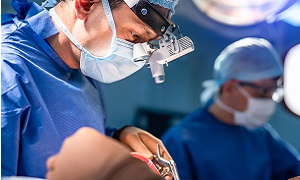Rotationplasty
Rotationplasty, a procedure which is used for the treatment of bone cancer (osteosarcoma), in the area of the knee or knee joint. This procedure is generally meant for children less than twelve years of age. In some cases, children who are older or adults might also be able to have rotationplasty.
This procedure is for those patients who would need an above the knee amputation due to the size of their tumor. An important factor is that the nerves can be saved, as they are required for the proper functioning of the ankle or foot.
Purpose
Since children continue to grow till adulthood, this procedure has a benefit, which is that the bone will continue to grow, thus helping the children to stay physically active. The prosthetic leg which is used with the procedure will be fitted and changed as the child grows.
There are alternatives to rotationplasty such as prosthetic knee or amputation. However, this usually limits the patient’s activity and the person is unable to play sports or perform any strenuous activity. When a child uses a prosthetic knee, generally multiple surgeries are required over the next growing years.
Many children who undergo rotationplasty can however continue to be active and take part in physical activities such as soccer, running, running, skiing, bicycling and more.
In addition, rotationplasty also helps to maintain the function of the nerve and blood vessel. Therefore, patients who undergo this surgery don’t suffer from the side effect called phantom limb pain, i.e. pain after amputation where the limb was removed. In order to be a candidate for this procedure, sciatic and other vital lower leg nerves must be intact and working.
Preparation
First, you should discuss with your doctor what you or your child needs to do while preparing for the procedure. Ask whether it is necessary to stop taking any kind of medications such as blood thinners. If the surgery is for you and you smoke, it is important to stop it before the procedure. If there are any changes in your overall health, let your healthcare provider know about this.
If you are interested in this procedure but are not sure if it is the right option for you or your child, then you can ask your doctors if they can put you in touch with other children and/or families who have gone through the procedure. This can help you better understand what you should expect. Generally most families find this step to be extremely helpful in making a decision.
Procedure
During the rotationplasty procedure, the parts of your leg and thigh bones which are having tumors are removed along with some of the healthy bone for obtaining a clean margin. This can include some of the lower part of your femur bone, the knee joint as well as some of the top of your lower leg. The lower part of the leg which includes the foot and ankle will next be rotated 180 degrees to face in a backward direction. This will then serve as a new “knee joint” and then attached to your thigh (femur).
The newly attached ankle joint will then act as your new knee and the backward-facing foot will fit into a custom-fit artificial lower limb.
Recovery
Recovery from a rotationplasty requires a stay in the hospital, which last up to around seven to ten days. Most patients will be going home in a cast. How much time one needs in the cast will depend on how long it takes for the bone for healing. Healing may take longer if the patient is undergoing treatments such as chemotherapy. Once the bones and wounds are healed, the child can be fitted for the prosthesis of the lower leg. During this time, the patient will most likely need a wheelchair or at least a crutch.
Physical therapy is an important part of the recovery process. It can help the patient to learn how he/she can use the ankle joint as a knee joint and how he/she can walk with the new leg/prosthesis. They will also need to learn how to wear and adjust the prosthesis. This generally requires a considerable amount of time and effort from the patient`s side. The length of therapy can vary depending on various factors. As a child who went through this procedure, continues to grow, they will be requiring a new prosthesis and may need short stints of physical therapy with each new prosthesis.
In the case of children, physical therapists need to meet with the patient and family before the procedure so that he/she may evaluate the needs of the patient and what they hope to achieve through the procedure.
Risks
As with any surgical procedure, rotationplasty has few risks and side effects. It is important to note that this is a highly specialized procedure and it is not done very often. Make sure the surgery is done at a reputable hospital or center and performed by a surgeon with experience.
Risks and side effects that are associated with a rotationplasty can depend on the patient as well as the procedure, as some patients might need more extensive reconstruction of blood vessels. General risks might include:
- Reactions to anesthesia/medications
- Infection or wound healing problems
- Bleeding or blood clots
- Injury to the nerves
- Problems with the blood supply to the grafted lower leg
- Inadequate bone fusion which might cause the need for additional surgery



